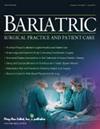Pulmonary Considerations and Management of the Morbidly Obese Patient
引用次数: 1
Abstract
Morbid obesity, defined as a body mass index (BMI) greater than 40 kg/m2 has implications for patient morbidity and mortality, hospital length of stay, resource allocation, and cost. Over time, physiologic changes related to morbid obesity occur in all body systems, and are particularly evident in the pulmonary system. Loss of functional residual capacity (FRC), restrictive and obstructive airway patterns, and alterations in gas exchange predispose the morbidly obese patient to conditions such as obstructive sleep apnea (OSA) and obesity hypoventilation syndrome (OHS). These conditions contribute to a marked decrease in pulmonary reserve, and when systemic insults such as traumatic injury or illness occur, respiratory failure may develop. Pulmonary anatomy and physiology, including lung capacities, compliance, resistance, and morphological changes that occur over time in the morbidly obese patient, will be discussed. Airway management and mechanical ventilation strategies used in the treatment of acute re...病态肥胖患者的肺部注意事项和处理
病态肥胖,定义为身体质量指数(BMI)大于40 kg/m2,对患者的发病率和死亡率、住院时间、资源分配和成本都有影响。随着时间的推移,与病态肥胖相关的生理变化发生在所有身体系统中,在肺系统中尤为明显。功能性剩余容量(FRC)的丧失、气道受限和阻塞性模式以及气体交换的改变使病态肥胖患者易患阻塞性睡眠呼吸暂停(OSA)和肥胖低通气综合征(OHS)等疾病。这些情况导致肺储备明显减少,当发生创伤性损伤或疾病等全身性损伤时,可能会发生呼吸衰竭。将讨论病态肥胖患者的肺解剖学和生理学,包括肺活量、顺应性、抵抗性和随时间发生的形态学变化。气道管理和机械通气策略在急性呼吸道感染治疗中的应用
本文章由计算机程序翻译,如有差异,请以英文原文为准。
求助全文
约1分钟内获得全文
求助全文

 求助内容:
求助内容: 应助结果提醒方式:
应助结果提醒方式:


